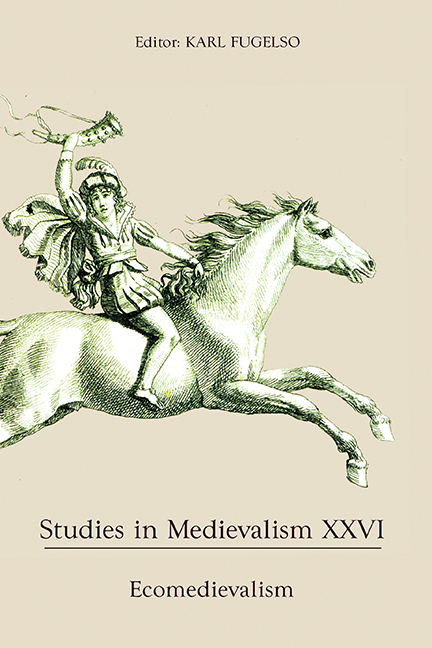Book contents
- Frontmatter
- Studies in Medievalism
- Acknowledgments
- Contents
- List of Illustrations
- Editorial Note
- I Ecomedievalism: Some Perspective(s)
- “A Sense of Life in Things Inert”: The Animistic Figurations in Nineteenth- and Twentieth-Century Medievalist Texts
- Future Nostalgias: Environmental Medievalism and Lanier's Southern Chivalry
- T. H. White's “Forest Sauvage”: Nostalgia and Loss
- Elvencentrism: The Green Medievalism of Tolkien's Elven Realms
- II Interpretations
- Contributors
- Miscellaneous Endmatter
T. H. White's “Forest Sauvage”: Nostalgia and Loss
from I - Ecomedievalism: Some Perspective(s)
Published online by Cambridge University Press: 15 September 2017
- Frontmatter
- Studies in Medievalism
- Acknowledgments
- Contents
- List of Illustrations
- Editorial Note
- I Ecomedievalism: Some Perspective(s)
- “A Sense of Life in Things Inert”: The Animistic Figurations in Nineteenth- and Twentieth-Century Medievalist Texts
- Future Nostalgias: Environmental Medievalism and Lanier's Southern Chivalry
- T. H. White's “Forest Sauvage”: Nostalgia and Loss
- Elvencentrism: The Green Medievalism of Tolkien's Elven Realms
- II Interpretations
- Contributors
- Miscellaneous Endmatter
Summary
Written in the shadow of two World Wars, T. H. White's Arthuriad, The Once and Future King (1938–58), revolves around the nature of human violence and the need to control it. While White's primary source is Sir Thomas Malory's Le Morte Darthur, Malory says nothing of Arthur's childhood in the household of Sir Ector, leaving White free, in his tetralogy's first book, The Sword in the Stone, to create an adolescence for the legendary king. This opening book maintains many of the aspects of chivalric romance present in Malory and constructs an idyllic boyhood filled with joy, wonder, and childhood adventures while also presenting intervening perspectives that foreshadow the ultimate failure of Arthur's desire to end violence through his reign. The perspectives of the modern, omniscient narrator and Arthur's tutor Merlyn, who lives backward through time and knows the future, create a bittersweet nostalgia that foreshadows the apocalyptic ending of Arthur's world. These elements converge in White's depiction of the Forest Sauvage surrounding Ector's estate, which becomes a location of comparison between medieval England and the modern world that both forecasts the tragedy of The Once and Future King and critiques the progress of White's own time.
The Sword in the Stone's Forest Sauvage, the Savage/Wild/Unspoiled Forest, replicates elements of woodlands found in Malory. While this opening book incorporates aspects of many genres, including pastoral, fantasy, and bildungsroman, the natural setting of the narrative closely mirrors the stereotypical romance forest. Many scholars have discussed the role of the forest in chivalric romance, including Corinne Saunders, who examines it as the location of adventure, love, and spirituality in a variety of texts, and Robert Pouge Harrison, who articulates the connection between the forest as the location of adventure for the knight and the romance as an aristocratic genre. The generic forms and motifs of medieval romance, which came to England through the Normans, are intimately bound to aristocratic values, including the depiction of the natural world as the location of adventures that support the knight's personal development and, through his success, uphold the ideology of the ruling class.
- Type
- Chapter
- Information
- Studies in Medievalism XXVIEcomedievalism, pp. 21 - 30Publisher: Boydell & BrewerPrint publication year: 2017

